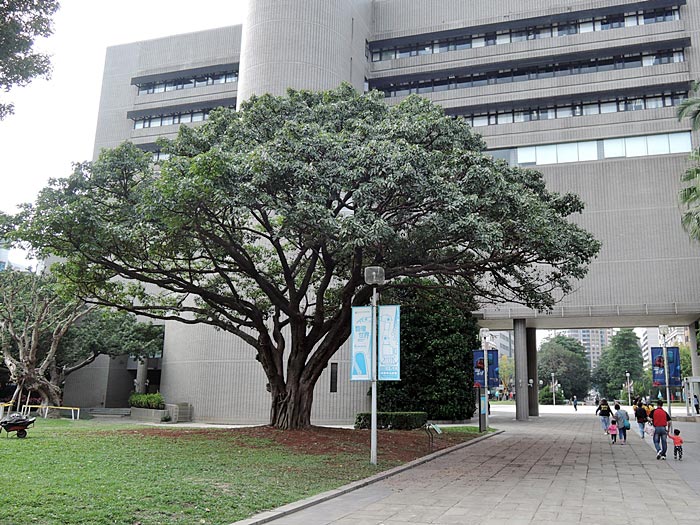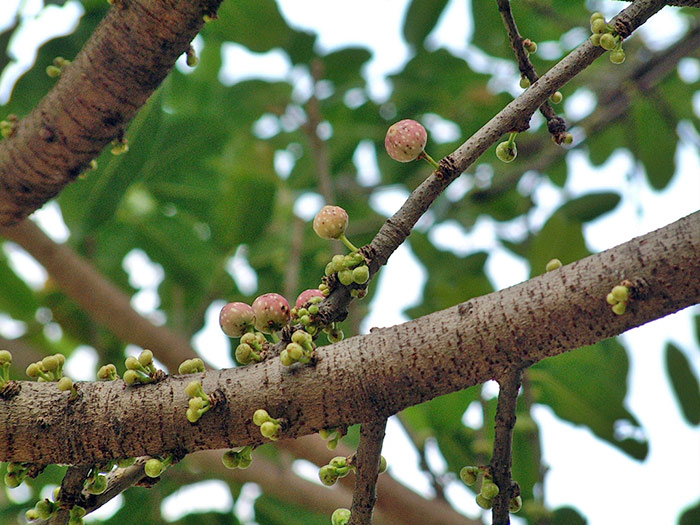Ficus superba
The large-leaved banyan is primarily distributed from southern China to southern Japan, and can be found in Hainan Island, Hong Kong, Taiwan, and the Ryukyu Islands. This range is not characterized by distinct seasonal changes typical of temperate regions, and temperatures rarely approach 0℃. In contrast, the impact of low temperatures on plants is not as severe. Many plants do not shed their leaves extensively due to cold but instead drop their old leaves quickly before new buds emerge. This allows them to rapidly fill the gaps left by the old leaves and even expand, giving them an advantage in survival competition. The large-leaved banyan takes this rapid leaf replacement to the extreme; the more frequently it replaces its leaves, the more new buds it produces, allowing it to capture more sunlight and increase its chances of survival. The timing of leaf replacement can vary from tree to tree, and throughout the year, it is possible to see different large-leaved banyan trees shedding leaves, with occurrences ranging from once to four times a year. In the outdoor gardens and the Botanical Garden of the museum, leaf shedding can typically be observed around April, early September, and the end of December. There is a large-leaved banyan on the lawn behind the Science Center of the museum that appears to be a single tree, but during leaf drop, only half of its leaves fall, revealing that it is actually two trees growing together.
The fruit of the large-leaved banyan is one of the favorite foods of urban birds, and you can often see them hopping among the branches laden with fruits. There are several large-leaved banyan trees with dense foliage that provide long-term resting and foraging places for animals. One of these trees, due to its longevity and massive size, has been designated as a protected tree by the Agriculture Bureau of Taichung City Government. After the birds eat the fruits, they often excrete the seeds on the branches, which can sprout and grow into small trees.

